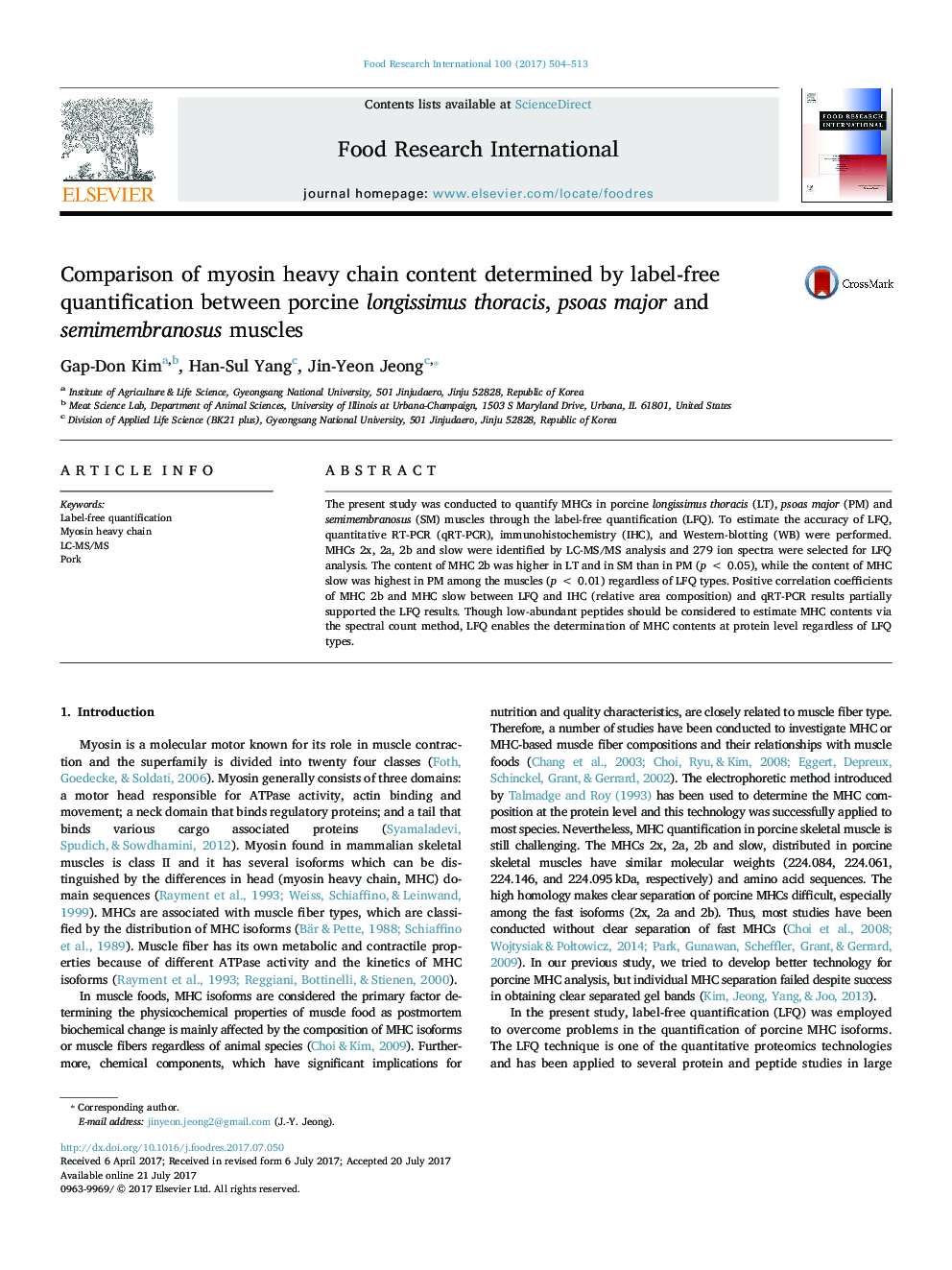| کد مقاله | کد نشریه | سال انتشار | مقاله انگلیسی | نسخه تمام متن |
|---|---|---|---|---|
| 5768001 | 1413211 | 2017 | 10 صفحه PDF | دانلود رایگان |
- We quantify the MHC isoforms in porcine skeletal muscles by LC-MS/MS and LFQ.
- Unique peptides could be used for both identification and quantification of MHCs.
- Clearly different MHC contents were observed between porcine skeletal muscles.
- Spectral intensity is more reliable than spectral count because of a few unique peptides.
The present study was conducted to quantify MHCs in porcine longissimus thoracis (LT), psoas major (PM) and semimembranosus (SM) muscles through the label-free quantification (LFQ). To estimate the accuracy of LFQ, quantitative RT-PCR (qRT-PCR), immunohistochemistry (IHC), and Western-blotting (WB) were performed. MHCs 2x, 2a, 2b and slow were identified by LC-MS/MS analysis and 279 ion spectra were selected for LFQ analysis. The content of MHC 2b was higher in LT and in SM than in PM (p < 0.05), while the content of MHC slow was highest in PM among the muscles (p < 0.01) regardless of LFQ types. Positive correlation coefficients of MHC 2b and MHC slow between LFQ and IHC (relative area composition) and qRT-PCR results partially supported the LFQ results. Though low-abundant peptides should be considered to estimate MHC contents via the spectral count method, LFQ enables the determination of MHC contents at protein level regardless of LFQ types.
123
Journal: Food Research International - Volume 100, Part 1, October 2017, Pages 504-513
